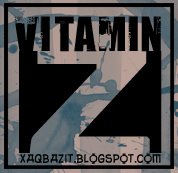
I might be doing a 12-pg piece for Cosmic Times here coming up and just finished my cover for What the Flux comics. I've had a little extra time this week for packing and have also been able to read some comics, specifically event/crossover titles. I got the 1st two graphic novels for Batman: KnightFall and The Death of Superman. and got to read the image miniseries Fight for Tomorrow. As well as finish what I had of Elementals vol. 1 and a few scattered issues into volumes 2 and 3.
Elementals was great up until the final last few issues, that their creator/artist Bill Wilmingham had nothing to do with and according the The Elemntals Wiki page dropped off of comico's map for a while. He apparently supervised vol. 2 and I have a few good issues from it that he even came back to draw. Towards the end of vol. 1 you could tell it was beginning to get into the 90's market, variant covers, specials, spin-off titles that never got past the 1st issue. By the time vol. 3 rolls around that's all it is, and the only reason worth reading the issues are some of the writing, which is still interesting as it starts to break all the rules the 1st volume set and expand the world. Though there are various obvious marvel/dc rips and rip-offs as well as fill in stories that are self contained and irrelevant. They even did Sex-specials - originally saying it would further explore their characters, then moved onto swimsuit and lingere specials where it became increasingly aparent they were looking to turn a buck and capitalie on all the horny teenagers using their parents money to buy comics - just like the other comics at that time.

Willmingham was a good storyteller, not a great artists, but i got used to it, a very non-pc writer but he was fairly good at pacing and plotting and kept it interesting.
Knightfall and Death of Superman are similarly great for those reasons, pacing and plotting. Thank you Louise Simonson and Chuck Dixon. They are essentially the same story:
Act 1) hero gets injured
Act 2) new heroes step up,
Act 3) old hero returns and must fight to reclaim his mantle.
But they are done very differently and both explore, fairly deeply, the philosophy of the main character - through the viewpoints of the secondary characters, since the hero isn't there to do any of the things they are talking about. I also got Kelley Jones' Deadman, which is among my favourite of his work. And there is experimentation at every turn, some things working amazingly, others not. Even to the point he uses his fingerprints to put down the ink. I'm also intrigued by the plot for the story as I don't know much about his character.
I have been working on finalizing a script for a graphic novel with James that I will pencil and he will ink while im down that way. During which time we will finish plotting and writing the scripts for the rest of Maelstrom. I'm hoping to get A project done, period, with him so we have something to show for our work and as we have played off of before we are trying to mix our styles. In the upcoming series I may just let him pencil and ink himself for the flashback sequences, or something - like marvel has been doing with JRJR and Joe Kubert on X-men.




